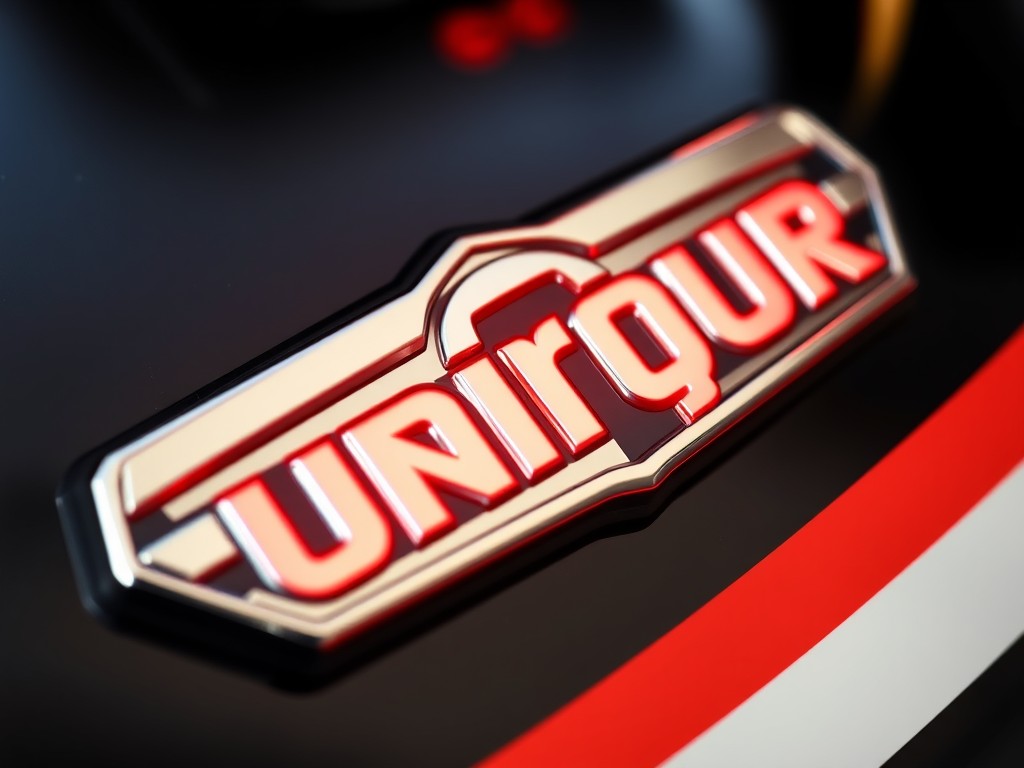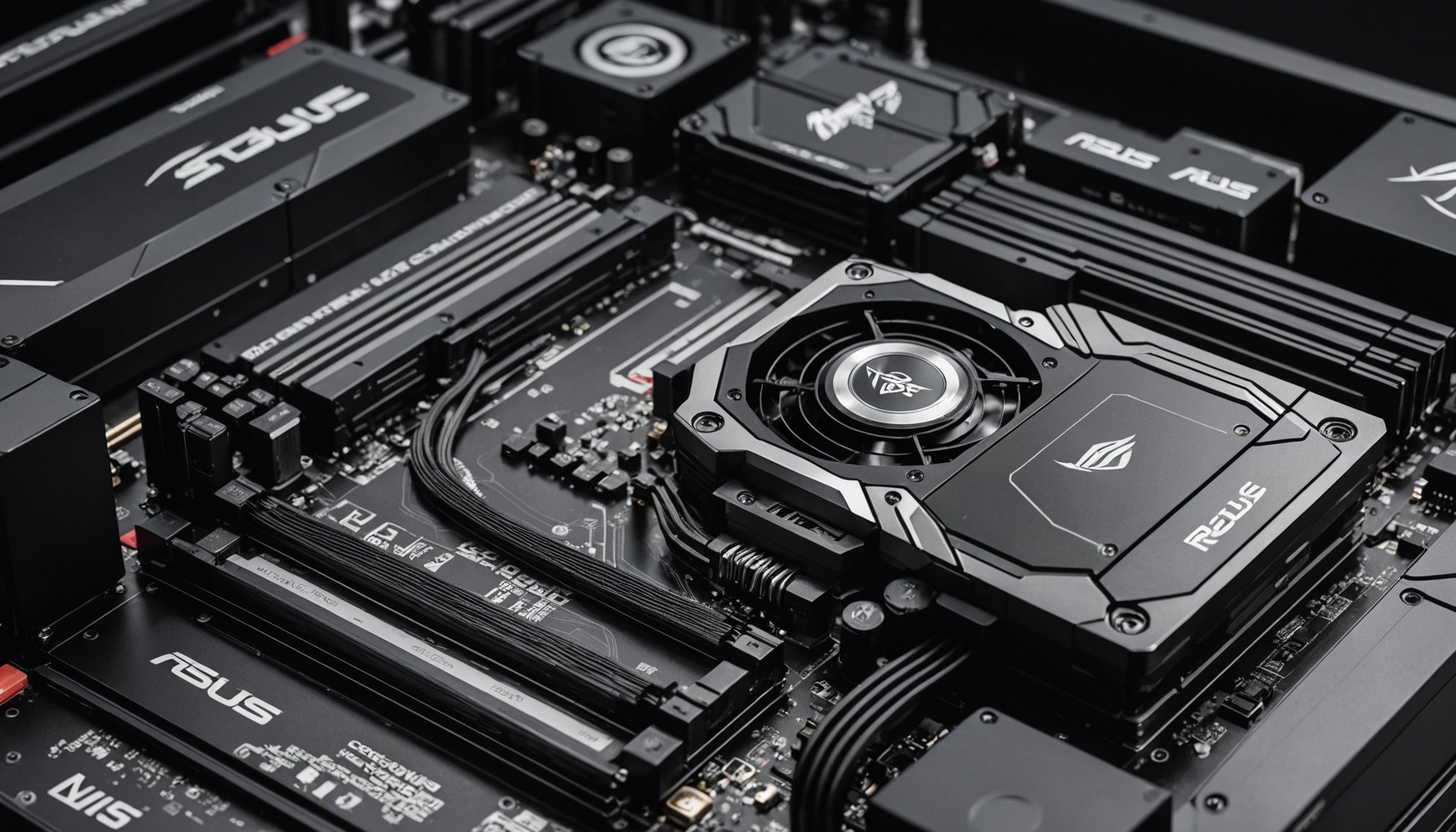Overview of the ASUS ROG Crosshair VIII Hero
The ASUS ROG Crosshair VIII Hero stands out as a flagship motherboard, boasting features designed for gamers and overclocking enthusiasts. It is built on the AMD X570 chipset, supporting AMD’s Ryzen processors, which is crucial for unlocking the full potential of your system. Equipped with dual M.2 slots, USB 3.2 Gen 2 connectivity, and Wi-Fi 6, it ensures comprehensive support for high-speed and efficient performance.
Selecting the right motherboard is critical for effective overclocking. The Crosshair VIII Hero provides a robust power delivery system, allowing stable and reliable voltage regulation essential for pushing CPU frequencies higher. Its durable build and advanced thermal design safeguard against overheating, a key risk of overclocking.
Also to read : Top Tips for Building a Safe Wi-Fi Network at Home with TP-Link Archer C5400X
When it comes to cooling, this motherboard supports a variety of liquid cooling solutions. Its comprehensive cooling ecosystem encompasses Fan Xpert 4 and a dedicated AIO pump header, making it suitable for high-performance builds. Understanding these specifications allows users to harness their system’s capabilities fully while maintaining optimal temperatures.
By providing a blend of power, compatibility, and advanced features, the ASUS ROG Crosshair VIII Hero empowers enthusiasts to achieve superior performance in their custom builds. Whether for gaming or intensive computational tasks, this motherboard is a cornerstone of a high-performance PC setup.
Understanding Overclocking Basics
Overclocking can significantly enhance CPU performance, allowing users to push their systems beyond standard operational limits. Fundamentally, overclocking involves increasing the CPU’s clock rate and voltage to achieve higher performance. This practice is particularly prized in gaming and demanding computational tasks, where additional processing power can lead to smoother and more efficient operations.
However, overclocking carries inherent risks, primarily related to heat generation and system stability. When a processor operates at higher frequencies, it generates more heat, threatening to overheat the system and potentially cause hardware failures. To mitigate these risks, robust and efficient cooling methods are essential components of a successful overclocking strategy. Implementing superior cooling systems, like liquid or air cooling, can effectively manage thermal output and maintain optimal temperature levels.
Choosing the right cooling solution is crucial in overclocking. Liquid cooling often offers superior thermal management compared to air cooling, due to its ability to dissipate heat more efficiently and quietly. Overclockers must weigh the pros and cons of each approach, considering factors such as cost, noise levels, and maintenance requirements. Ultimately, the goal is to achieve the desired performance boost while ensuring the longevity and reliability of the hardware components involved.
Step-by-Step Overclocking Guide
Embarking on the journey of overclocking can seem daunting, but with the right approach, it becomes straightforward. The ASUS ROG Crosshair VIII Hero motherboard is designed to make this process as seamless as possible. First, ensure you’ve prepared adequately by meeting all system requirements and having a backup of important data. An integral step involves accessing the BIOS settings. Restart your computer, press the designated key (usually Delete or F2) during boot-up, and navigate to the Advanced mode.
To safely increase your CPU frequency, start by incrementally adjusting the CPU multiplier. Small changes, followed by testing, will ensure system stability. Next, proceed to voltage settings. Adjusting the voltage can enhance performance, but caution is key—aim for minimal increases. Monitoring system stability during these adjustments is crucial. Use diagnostic software like CPU-Z or AIDA64 to confirm your settings’ safety.
Throughout the process, continually check the temperature and voltage levels. Thermal management is paramount to preventing damage from overheating. With careful adjustments and observant monitoring, you can achieve enhanced CPU performance without compromising the longevity of your system. Through this meticulous step-by-step guide, overclocking on your ASUS ROG Crosshair VIII Hero can be both rewarding and reliably executed.
Comparing Cooling Methods
Choosing the right cooling methods is critical for successful overclocking. Cooling performance directly impacts system stability and longevity. Users must compare liquid cooling and air cooling to determine the ideal solution.
Liquid Cooling vs Air Cooling
Liquid cooling often delivers superior thermal management due to its efficient heat dissipation. It provides quieter operation, ideal for reducing noise levels in powerful builds. However, it typically involves more complex installation and maintenance.
Air cooling utilises fans to maintain a cost-effective and straightforward setup. While generally easier to install, its cooling efficiency can be limited in highly overclocked systems. For users prioritising simplicity and budget, air cooling can suffice, assuming environmental conditions are optimal.
Factors to Consider
Several factors should influence your choice:
- Budget: Liquid systems are generally costlier but offer better cooling.
- Installation complexity: Air cooling is simpler, appealing to novice builders.
- Noise levels: Liquid systems tend to operate more quietly.
Long-term Maintenance and Reliability
Consider the maintenance of each method. Air cooling requires less frequent upkeep, typically involving dust removal. Liquid cooling systems might need periodic liquid changes and leak checks. Assess your willingness to invest time in maintenance when selecting a cooling solution. This consideration aids in preserving system stability and ensuring efficient thermal management.
Liquid Cooling Integration
Integrating a liquid cooling system is crucial for high-performance setups that prioritize efficient thermal management. The ASUS ROG Crosshair VIII Hero motherboard is compatible with several advanced liquid cooling options, enhancing its robust capabilities. Choosing the right system can significantly impact your build’s cooling performance, noise levels, and overall aesthetics.
Liquid cooling systems typically include components such as radiators, water blocks, and pumps. They efficiently transport heat away from the CPU and other critical components, making them ideal for overclocking scenarios. Installation requires careful planning and execution to ensure optimal performance. Beginners might find the process daunting, but following detailed tutorials helps demystify the steps involved. Pay attention to alignment, securing all components tightly, and managing tubing carefully to prevent leaks.
Performance-wise, liquid cooling greatly reduces temperatures compared to traditional air methods. This benefit translates into quieter operation and the ability to sustain higher CPU frequencies during intensive tasks. While generally more expensive, the investment can extend the lifespan of your components and boost system stability. Evaluate the trade-offs between enhanced thermal management, the complexity of installation, and maintenance requirements to make an informed decision regarding your cooling strategy.
Performance Benchmarks and Best Settings
Achieving the right balance of high performance and stability through overclocking requires understanding performance benchmarks and selecting optimal settings. Performance benchmarks provide a quantifiable measure of a system’s capability before and after overclocking. They help to identify the increases in speed and efficiency gained through system modifications and are invaluable in adjusting settings to suit your particular usage—such as gaming or rendering.
The ASUS ROG Crosshair VIII Hero is renowned for delivering impressive gains when configured correctly. Optimal overclocking settings vary depending on tasks; however, it’s usually best to start with moderate adjustments. A reliable approach involves small, incremental increases in the CPU multiplier while verifying each change’s effects through benchmarking tools.
Stress testing is essential after each adjustment to ensure your system’s stability and reliability. Tools like Prime95 and AIDA64 are recommended to simulate extreme conditions. These tests should run for several hours to confirm that your setup can handle the most challenging tasks without errors or overheating.
Real-world results will validate your tuning decisions. Being methodical with benchmarking and stress testing enables you to fine-tune your system for peak performance with minimal risk—essential for achieving the delicate balance between speed and safety.
Troubleshooting Common Issues
Embarking on overclocking can occasionally lead to system errors, requiring adept troubleshooting to maintain stability. Recognising common overclocking troubleshooting symptoms, such as system crashes or unexpected behaviour, is vital for a seamless experience.
One frequent issue during overclocking is encountering system errors and error codes. These can manifest as blue screen errors or system instability after changes in CPU settings. Error codes like “WHEAUNCORRECTABLEERROR” often point to improperly configured settings or excessive heat.
Mitigating these problems involves revisiting your settings methodically. If a system fails to boot after adjusting the CPU multiplier, revert to the last stable settings by accessing BIOS or using safe mode. Adjust voltage settings cautiously, ensuring they are within safe limits. Additionally, proper thermal management is crucial to prevent overheating.
For further assistance, numerous resources and dedicated forums exist, offering invaluable advanced troubleshooting assistance. Communities such as Reddit’s overclocking forums provide insights from other users who have faced similar challenges. Keeping system drivers and BIOS firmware up to date can also reduce errors. Through deliberate adjustments and leveraging available resources, most common overclocking issues can be effectively addressed, ensuring a stable computing experience.
Comparing Cooling Methods
Choosing between cooling methods is crucial for effective overclocking. Let’s delve into the pros and cons of liquid cooling versus air cooling.
Liquid Cooling vs Air Cooling
Liquid cooling often excels in thermal management, leveraging efficient heat dissipation. It offers quieter operation, beneficial for reducing noise in high-performance builds. However, installation can be complex and necessitates periodic maintenance to prevent leaks or fluid depletion.
On the other hand, air cooling provides a straightforward setup using robust fans. It’s more budget-friendly and easier to install, making it ideal for beginners. However, its efficiency may falter under intense overclocking, where heat generation is substantial.
Factors to Consider
Several considerations are pivotal in cooling choice:
- Budget: Liquid cooling costs more but excels in efficiency.
- Installation complexity: Air cooling is user-friendly, appealing to novices.
- Noise levels: Liquid systems tend to operate more quietly.
Long-term Maintenance and Reliability
Air cooling requires minimal upkeep, predominantly dust removal. Conversely, liquid cooling demands more attention with regular fluid checks and potential leak monitoring. Considering maintenance efforts is crucial in selecting the optimal cooling system, ensuring reliable and sustained thermal management.











